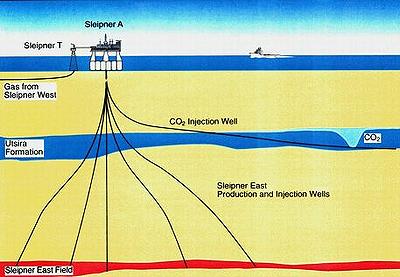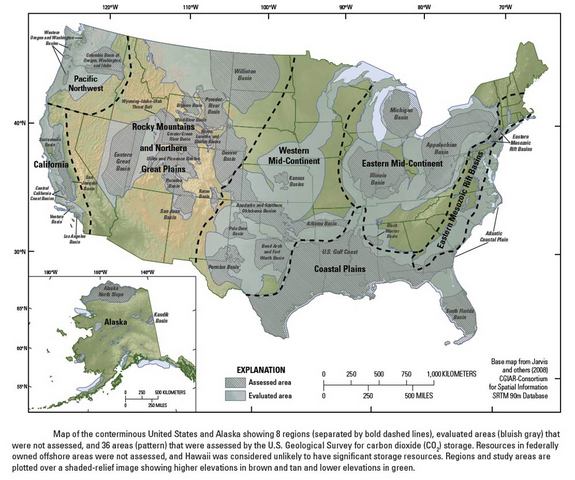December 19, 2013 – For those in the business of carbon capture and sequestration (CCS) the biggest challenge is less in capturing the carbon and more in finding a place to put it where it won’t come back into the atmosphere in the near future. That’s one of the reasons CCS projects are few and far between these days and the ones that are in play like Inventys Thermal Technologies’ new installation in Joffre, Alberta, involve putting the CO2 into existing production wells to enhance oil recovery. At least we know that oil and out gases from Joffre are under control. Putting CO2 back into the reservoir should have no environmental downside.
Now let’s look at what is being done in the North Sea at the Sleipner field as reported in the journal, Nature, this week. Here waste CO2 gets separated from natural gas and is reinjected into sandstone sediments lying 800 meters (about one-half mile) below the seabed. These sediments were once thought to be stable reservoirs for sequestering carbon. Recently, however, a submersible studying the geology of the seabed found fractures in the rock.
Statoil, the Norwegian energy company, is the operator at the Sleipner field site. The company has been separating CO2 from hydrocarbons and injecting the gas into the sandstone formations since 1996. This has amounted to 1 million tons per year (over 12 million tons since the beginning of operations). The sedimentary formation covers an area 24,000 square kilometers (about 9,300 square miles). On their website they describe the site as safe because of an overlying cap rock that is “gas-tight.”
The fractures aren’t the only geological discoveries. The researchers describe vertical chimneys and pipes running through the sedimentary rock formation. Are these potential routes by which CO2 can escape back into the North Sea and the atmosphere? No one knows for certain. Those involved in reviewing the data feel that with no leaks to date it is highly unlikely that CO2 will seep out.
One of those experts, Klaus Wallman, a marine geochemist at the GEOMAR Helmholtz Centre for Ocean Research in Kiel, Germany, is quoted as saying about a potential leak, “we are very confident that if it were to occur, the rates would be low and the impact would be minimal.”
Sandstone seems to be the preferred medium for CCS projects. In the U.S. many of the pilot projects capturing CO2 from flue gases involve injection of the gas into sandstone. Sandstone is particularly good for this because some formations can be saturated with as much as 80% CO2 which is injected in liquid form. Injection practices involve filling up the stone without causing fractures. So the pressures have to be just right.
The U.S. has identified 36 geological regions across the country that appear to have the proper subterranean conditions for sequestering carbon. Capacity in these locations is estimated to be between 2,400 and 3,700 gigatons (one gigaton equals a billion tons). That capacity is considerably greater than anything done to date in the North Sea and with the U.S. emitting 5.4 gigatons of CO2 from fossil-fuel operations this year, more than enough capacity for now and into the future.
But there is stable rock formations and there is “stable.” The recent fracture discoveries in the North Sea seabed demonstrate just how much we still need to learn about geological formations. And when we are expecting the CO2 to permanently be removed as a global warming threat, how confident can we be about long-term viability? None of us will be around 10,000 years from now to know if we got it right. After all Wallmann when asked about the unexpected fracture found on the seabed states, “We don’t know how it formed, when it formed, and why it formed.”









